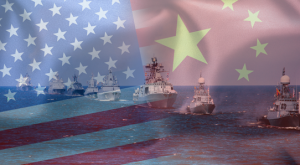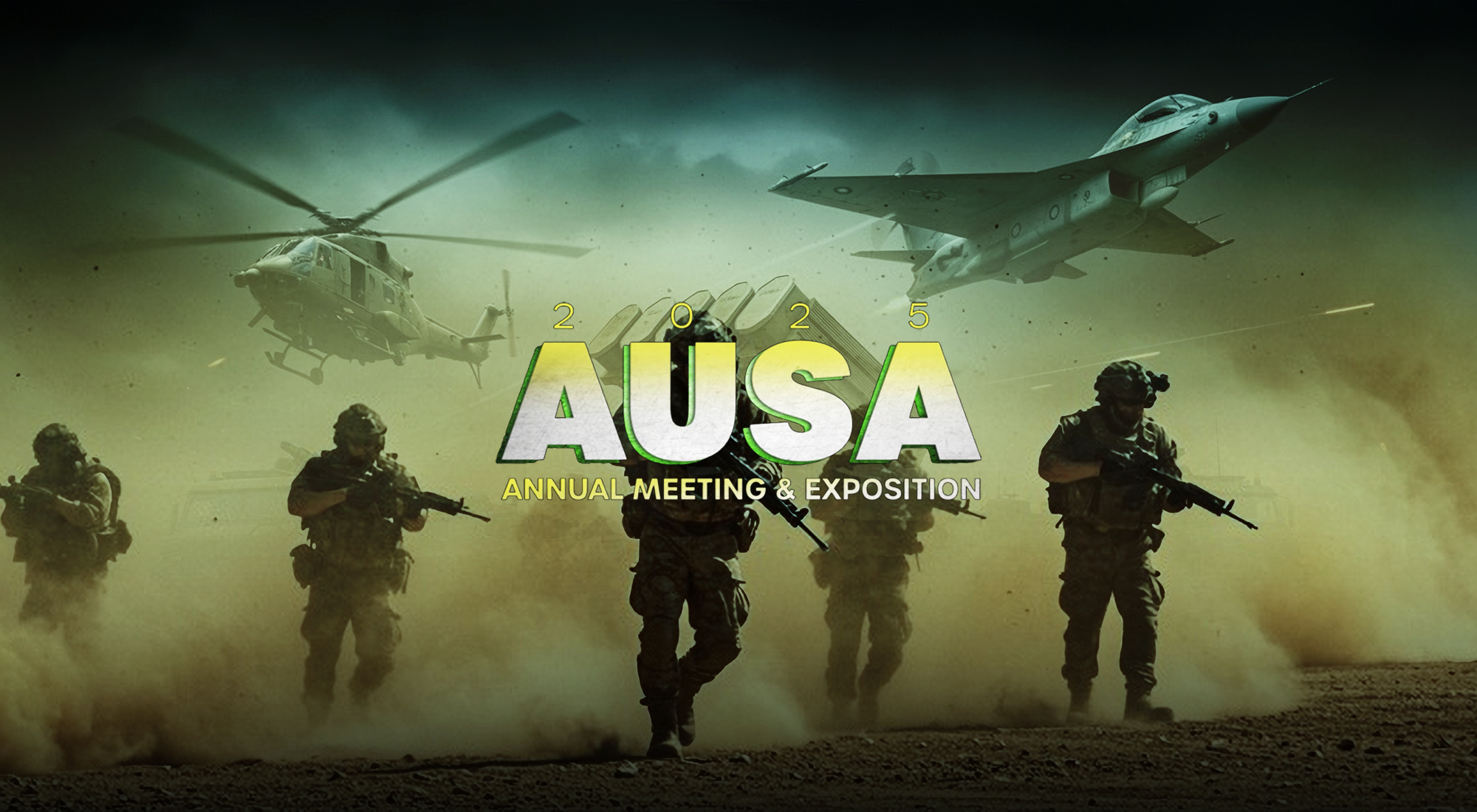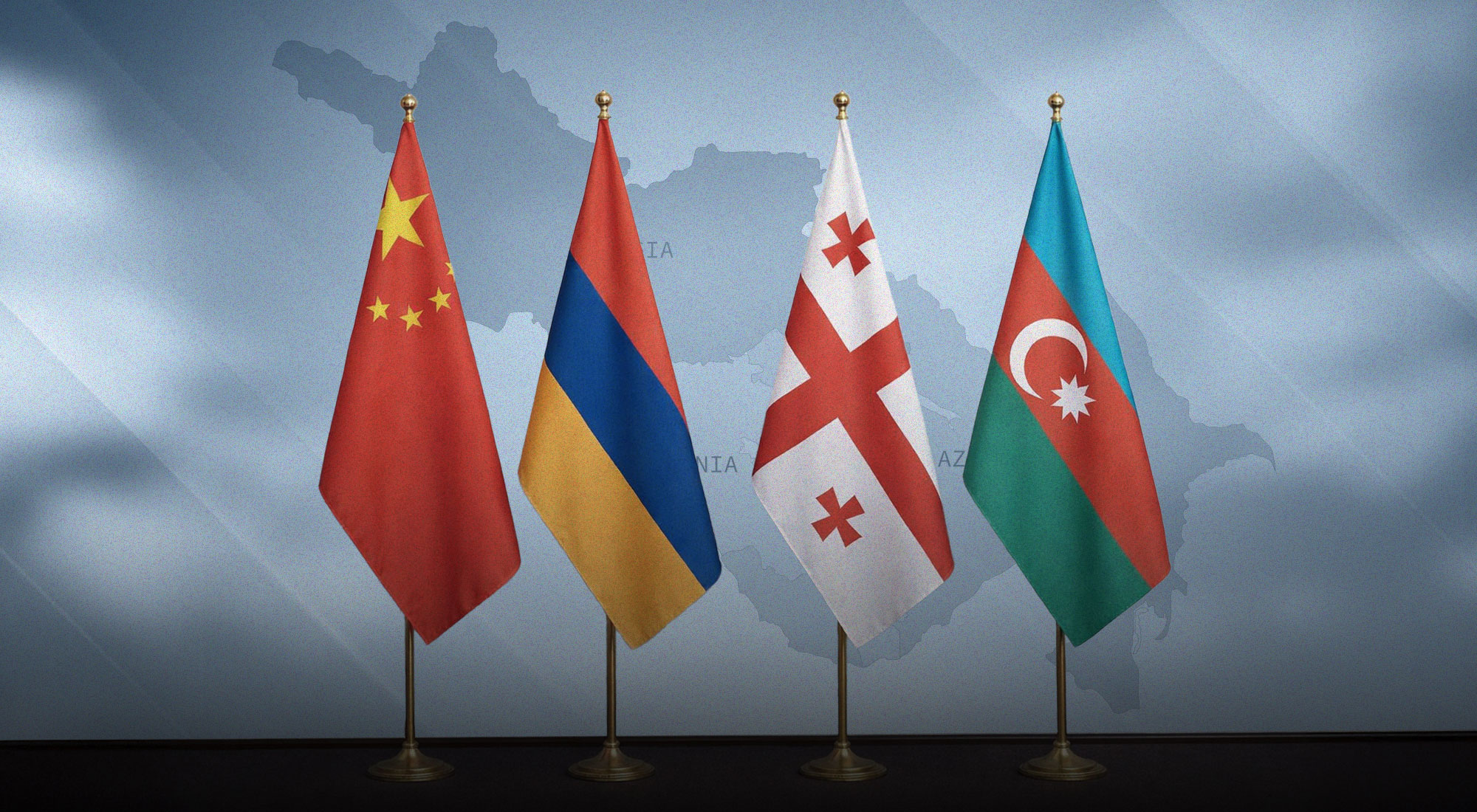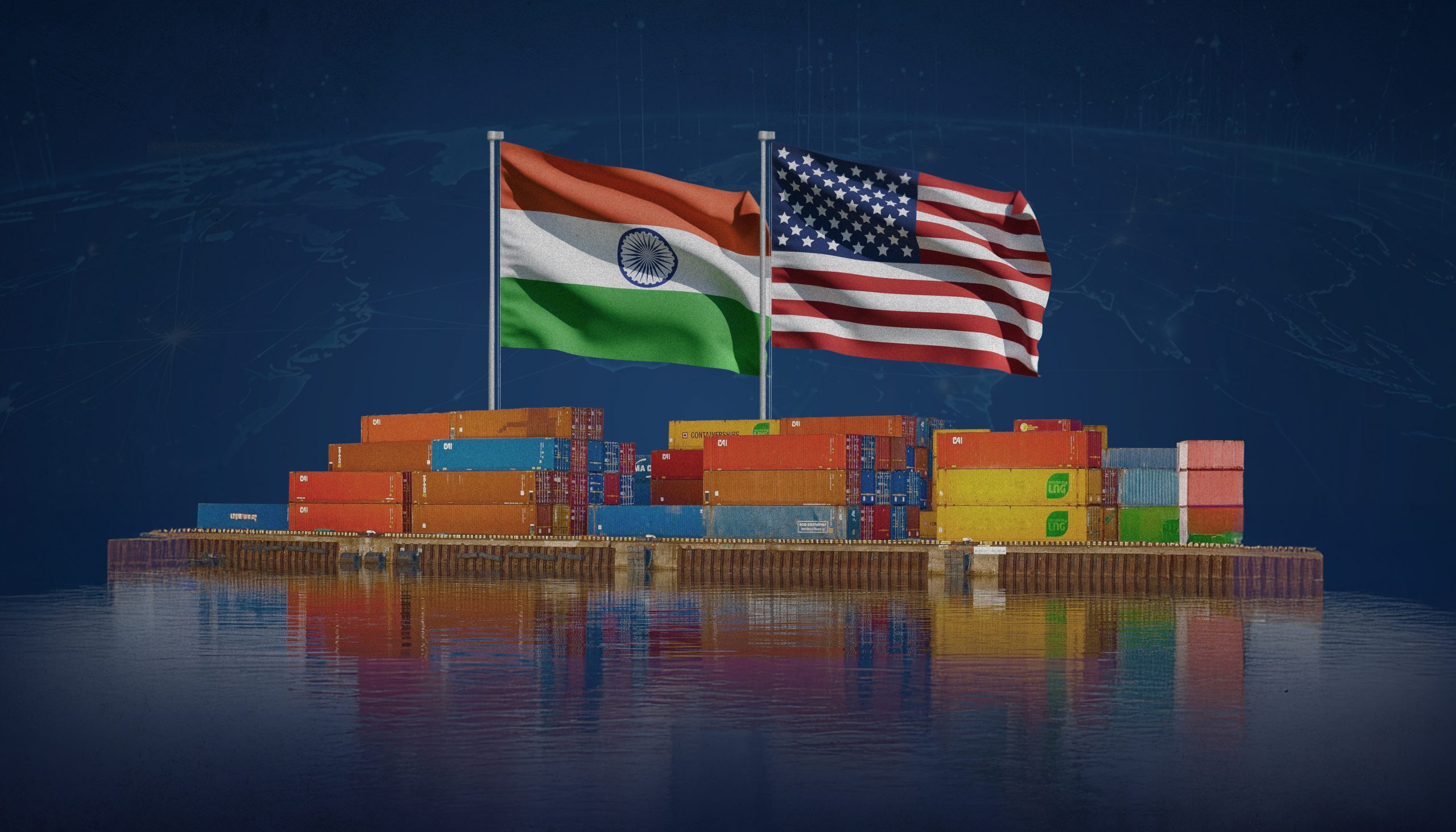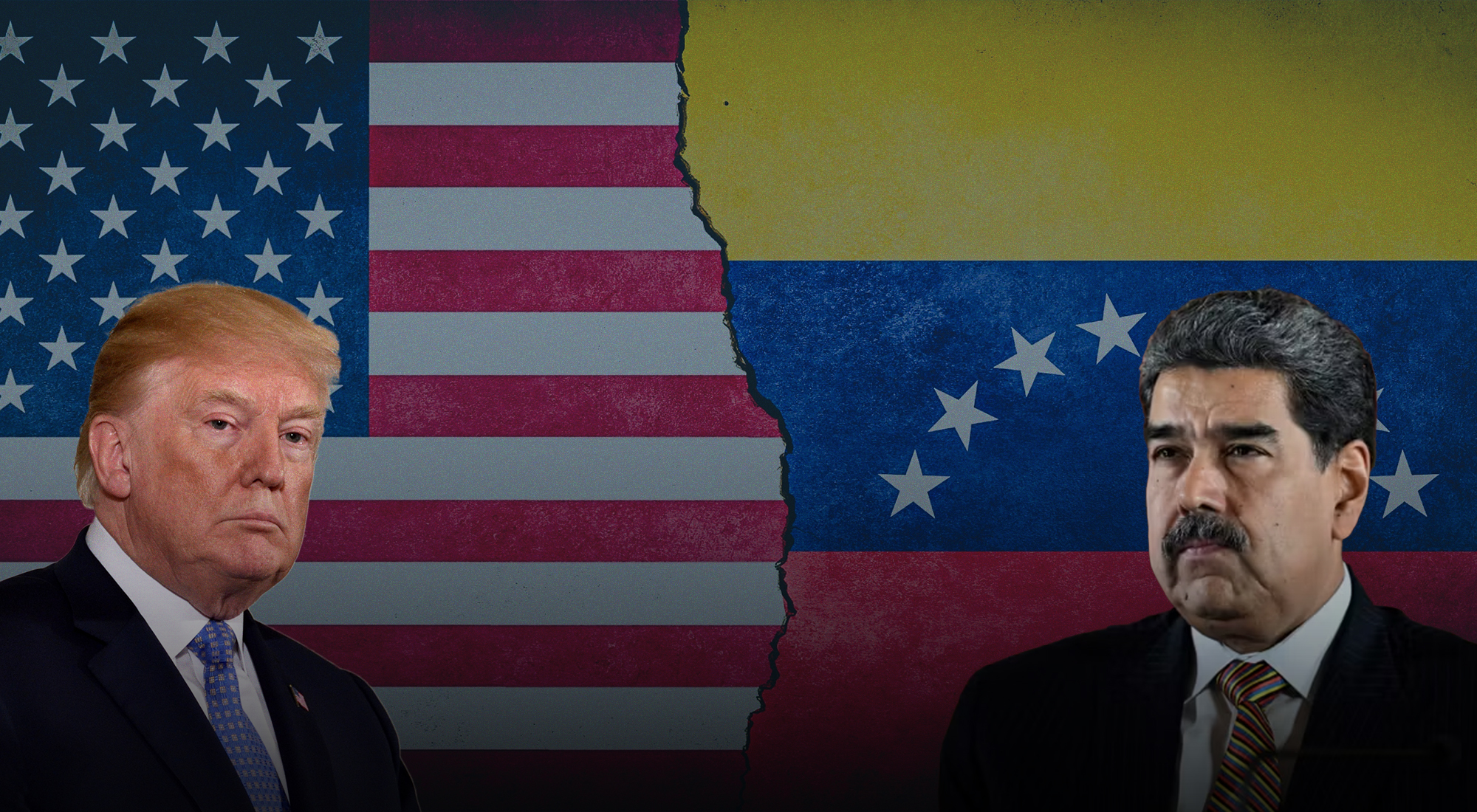Introduction
The rise of China as the potential challenger to the United States-led Western dominance has signaled the return of great power competition in the international order. China, currently the second-largest economy globally, is on track to overtake the US by 2030 to become the world’s largest economy. [1] It is also the world’s biggest energy consumer and its second-biggest defense spender.
China is also leapfrogging into a dominant position in cutting-edge technologies such as quantum science, 5G communications, artificial intelligence (AI), robotics, and space. China’s growth as a global power in economic, technological, and military terms has unsettled the US and some of its allies. Its assertive posture in the South and East China Seas, its Belt and Road Initiative (BRI) strategy that seeks to integrate much of Eurasia with its economy indicate an intensifying great power competition characterized by the US-China rivalry.
China’s growth in technology, innovation, and high-tech manufacturing over the last two decades has been spectacular. Xi Jinping’s assertion that ‘time and situation’ favor China is a clear indication of its shift from Deng’s strategy of ‘lie low and bide your time’ to a more assertive strategy of China claiming its rightful place. His clear articulation of timelines for the realization of the ‘Chinese Dream’ is significant. By 2049, China aims to achieve the number one world power status with a world-class military.
The US-China strategic competition spans primarily three dimensions: the geo-economic and geo-political contest for power and influence, the race for technological supremacy, and dominance in military power. [2]
Emerging Power Transition: Driver of US-China Strategic Competition
The 21st-century world is at the crossroads of power transition in the international system. Power Transition Theory, articulated by Organski in 1958, defines the international order as a hierarchic structure headed by the most powerful state, the ‘dominant power,’ which creates the order and uses its power to obtain the lion’s share of benefits and lays down the rules to perpetuate the privileges. [3] The United States, as the dominant power or the hegemon, helped create the post-1945 world order.
Hegemony [4] is established through a combination of coercive power and manufactured consent. [5] The Power Transition Theory posits that conflict is likely when a rising power overtakes the dominant force, especially when it aspires to create a new international order. Ronald L. Tammen et al. advance the power transition theory further by examining the functioning of power hierarchies at regional levels. [6] Conflicts at regional levels will be characterized by Great Power participation.
Thus, China’s assertiveness in the South China Sea could lead to conflicts with smaller powers and seek to dilute the power and influence of the US through asymmetric strategies. On the other hand, the US has revived its alliance strategies to combine with India, Japan, and Australia to create the Quad strategy to blunt China’s increasing influence in the Indo-Pacific.
A mathematical analysis of power gives a reasonably good understanding of the rising powers’ impact on the existing world order. Professor Sulek’s Powermetrics Approach considers three types of power: economic power, military power (part of economic power), and geopolitical power (the result of economic and military power) in estimating the distribution of power. Power transition takes place over decades. Hence, the most reliable comparisons of changes in power distribution will emerge over more extended periods using economic power. However, in the short-term, military power and, as a consequence, geopolitical power tends to take center stage.
The 2020 report of Powermetric Research Network ranks countries in the categories of super power, world power, great power, regional power, and local power. According to this, China has passed the United States to become the leading economic power globally, while it has attained world power status in military and geopolitical dominance. Currently, the US is a superpower in military and geopolitical power while it is second in economic power ranking. Various studies confirm the growth of China as the world’s leading power by 2050, [7] thus overtaking the United States in all categories of power. [8]
Power transition theorists have predicted that challenges to US dominance will primarily emerge from Asia in the 21st century. [9] Similarly, the 2018 National Defense Strategy document of the US Department of Defense (DOD) acknowledges the re-emergence of long-term strategic competition among great powers. It suggests that China’s rise as a peer power poses an economic, political, and military threat to the US’ dominant position. [10]
The US is deeply worried about the erosion of its power and influence, which is indicated by the passing of the recent bill – Strategic Competition Act of 2021 – that explicitly targets the People’s Republic of China (PRC) as the threat. The bill reaffirms the US view that China poses a significant threat to the free and open world order and that the US should take up this strategic competition. [11]
So, what are the key elements shaping the US-China Strategic competition? What ‘explains’ the US-China strategic competition logically follows from the power transition in the international system. As defined in the RAND study, “competition in the international realm involves the attempt to gain an advantage, often relative to others believed to pose a challenge or threat, through the self-interested pursuit of contested goods such as power, security, wealth, influence, and status.” [12] The factor of threat or challenge defines strategic competition as ‘active rivalry between states that perceive their fundamental interests under threat by the opposite party.’ [13] Thus, the US-China strategic competition emanates from the US’ perceived threat to its dominance by China, and winning defines the end-state of this strategic competition. [14]
Essentially, ‘strategic competition’ functions in the space between peace and war. In short, the strategic competition focuses on ‘power and influence: the current hegemonic power, the United States, uses its strategic tools to sustain its hegemony, while the rising power, China, seeks to enhance its power and influence, first in the Asia-Pacific and then at the global level. The US sees China as a strategic competitor, which aims to upend the current liberal international order.
China uses the weight of attraction of its economy to increase its power and influence in the Asia-Pacific. China’s economic heft, its growing informational toolbox, and geopolitical advantages make the contest for influence primarily non-military in character. [15] Despite the backlash on its poor handling of the Covid-19 related geopolitics, China’s influence in Asia seems to be getting better at the expense of the US. An example is a successful conclusion of the RCEP (Regional Comprehensive Economic Partnership) in November 2020. [16]
Will the US-China power transition lead to conflict? [17] One of the fundamental causes of conflict in power transition is the latecomer’s dissatisfaction with its share of the tangible and intangible benefits accorded by the international system. Steve Chan believes this does not apply to China, which is a risk-averse latecomer. [18] China, generally satisfied with the existing international order, has used it to grow to become the world’s most powerful economy rapidly. As its power in other elements grows, China seeks to carefully alter the international order’s rules to enhance its benefits rather than destabilize.
The US-led western world predominantly propagates the western idea of liberal democracy and a free-market economy as the global norm. The rise of China with its single-party system is seen as a challenge to this concept. Xi Jinping’s China projects the strength and benefits of the Chinese model – “socialism with Chinese characteristics” – and suggests that the PRC could serve as a model of development for other countries by utilizing “Chinese wisdom’ and a “Chinese approach to solving problems.” [19] Similarly, China’s increased expenditure on multilateral institutions and its creation of global financial institutions such as the Asian Infrastructure Development Bank (AIIB) indicates its desire to restructure global governance. [20]
As the center of gravity of global power shifts to Asia, the US-China rivalry plays out in major areas of disagreement between the two countries: Taiwan, Tibet, South China Sea, multilateral and international organizations, a potential threat in Asia, strategic alliance, weapons proliferation, human rights, and environmental issues. Besides, China’s rise reflects the rise of Asia with Asian values contrasting with Euro-centric values. As a result, countries in the Asia-Pacific have adopted a hedging strategy and avoid taking sides between China and the US.
Geo-economic and Geopolitical Dimensions
The geo-economic and geopolitical nature of the US-China strategic competition makes it very different from the primarily ideological contest of the past US-Soviet Cold War. The interdependent nature of the US and Chinese economies, the globalized nature of the current world, and the absence of ideological contest characterize this rivalry. [21] Rising China is pursuing a three-pronged strategy in the Asia-Pacific to restructure the international economic and security framework. It seeks to establish military dominance in the South and East China Seas and a long-duration naval presence in the Indian Ocean Region (IOR). China also aims to develop overseas ports/bases and alternate sea lines of communication (SLOC) routes and use the BRI as a geo-economic and geopolitical strategy to draw Eurasia and Africa into its Sino-centric economic system.
As an economic strategy, the BRI is ‘both a blueprint and a testbed for establishing a Sinocentric world order.’ [22] It is a massive economic development program that extends from Southeast Asia through South and Central Asia into Europe, the Middle East, and Africa. While the ‘Belt’ is an overland series of projects across Eurasia, the ‘Road’ is an ambitious chain of expanding and upgrading ports and infrastructure in the Indo-Pacific and the Mediterranean to facilitate access to global sea lanes.
In nominal terms, China’s GDP in 2020 was $14.8 trillion making it the second-largest economy behind the US, whose GDP was $20.9 trillion. In PPP (purchasing power parity) terms, China is already the world’s largest economy with a GDP of $26.7 trillion. Its nominal GDP is likely to overtake that of the US by 2028. [23]
As the largest infrastructure project in history, BRI poses the biggest geo-economic and geo-strategic challenge to the US. With 139 states as members of the BRI and 100 countries spanning Eurasia, the Middle East, and Africa fully engaged in economic-industrial and geopolitical partnerships, China is replacing the US as the dominant commercial player and influencer in the world. The BRI, with $1.3 trillion Chinese-led investment, is a multi-decade program that involves a web of infrastructure. The program includes roads, railways, telecommunications, energy pipelines, power projects, including wind and solar, and ports, enhancing economic interconnectivity and facilitating development across Eurasia and Africa. [24]
The BRI has over 2,600 projects in over 100 countries, with a total value of US $3.7 trillion. [25] The BRI is a highly complex program involving many countries that need complex coordination and the execution, which could pose significant challenges to China. [26] But given China’s massive infusion of funds, the projects’ ability to generate self-sustaining revenues, and inbuilt flexibility for corrections and upgrading of its execution process, the success of the BRI looks assured. Effectively, the BRI may turn out to be a zero-sum game for the West in two or three decades.
The US has continued to highlight economic risks posed by BRI, particularly the debt-trap problems that smaller countries are likely to face. The Biden Administration, through the G-7 framework, has now announced its intent to compete with an infrastructure strategy, Build Back Better World (B3W), as an alternative to the BRI. [27] It would be a challenge to match the multi-trillion-dollar BRI that has been going on since 2013. As a result, the B3W is likely to be seen as merely another element in the US strategy to counter and decouple from China.
With the increase in its economic and military power, China has taken an increasingly assertive position for reforms in multilateral institutions to increase the representation of the developing countries’ views. It has also played a leading role in creating alternative development finance institutions such as the AIIB and New Development Bank (NDB) of BRICS. These are seen as efforts to reduce the influence of US-dominated IMF and World Bank. China is also emphatic that multi-polar world order is an absolute necessity and is focused on reducing American power and influence in global governance. Xi Jinping declared that China needs to lead “the reform of the global governance system with fairness and justice.” [28]
Quest for Technology Leadership
The US initiated the trade war against China in 2017, citing a massive trade imbalance and accusation of opaque procedures, technology theft, IP violations, and lack of fair access to China’s market. However, the underlying driver for this clash is the race for global technological supremacy as China leapfrogged into cutting-edge technologies like AI and 5G. [29]
Although China is the world’s largest exporter of high-tech products, at the US $733.4 billion in 2020, it is critically dependent on imports for most materials and components, including semiconductor chips mainly from the US and the West. China’s share of global semiconductor demand is 35 percent. Its share of the world’s integrated device manufacturers, capable of designing, manufacturing, and selling integrated circuit products, is less than 1 percent. As a result, when the US initiates technology and export control measures in the name of national security, it causes serious disruptions for Chinese companies like ZTE and Huawei.
The ‘Made in China 2025’ (MIC 2025) policy, a 10-year plan initiated in 2015, focused on creating self-sufficiency and technological innovation capacity in robotics, AI, and energy-efficient cars. This policy expands on the earlier SEI (Strategic Engineering Industries) policy, prioritizing seven critical high-tech industries. MIC 2025 calls for utilizing indigenous patents as against imports and has aimed to increase production of domestically designed components to 40 percent by 2020 and 70 percent by 2025. [30] The ‘MIC 2025 industrial upgrade strategy,’ with exclusive support to domestic industries, is seen as a serious threat to the US and Western competitiveness in high-tech sectors.
To counter American-led trade and technology sanctions, China is infusing massive funds in its R&D, particularly in basic research, emphasizing quality over high-speed growth. [31] It is set to overtake the US by 2025 as the world’s largest R&D investor. It’s gross domestic expenditure on R&D was US $515.9 billion in 2020 as against US’s $570 billion. [32]
China’s 14th five-year plan (2021-2025) is a strategic innovation-driven blueprint for short and medium-term development. It reflects a major policy shift. The new domestic ‘dual circulation’ development model marks the end of export-led economic strategy and a shift toward a ‘dual circulation’ growth pattern driven by domestic demand supplemented by external demand. Innovation is at the core of this strategy, with technological independence as a strategic pillar of national development. China aims to be the world’s leading innovator by 2035. [33]
China’s growth in space, defense, AI, quantum science, telecommunications, and the 4th Industrial Revolution’s disruptive technologies has been rapid and extraordinary and is already eroding the US’ military advantage. China’s strategies of military-civil fusion and ‘intelligentization’ are leading to significant capabilities in the application of AI technologies in military operational concepts such as swarming, decision support, and information operations. The convergence of the AI revolution and the re-emergence of great power competition poses grave challenges. It threatens the US’ role as the world’s engine of innovation and American military superiority.
China is also competing for playing a role in global technology standardization. The international high-tech sectors are dominated by the US and the West’s standard-setting through the ‘Washington Consensus.’ The US-led technology standard-setting system ensures its global dominance. It is disadvantageous for late developers like China, which has established national technology standards that satisfy its interests better and promotes them as alternative international standards. [34] The setting of technology standards becomes more pivotal in the race to economic and technological supremacy. American strategy to counter this challenge has been selective decoupling from China by disrupting its global value chains.
The US strategy was evident in its global campaign against Huawei’s 5G rollout and measures like blocking collaboration and access to critical emerging technologies. It has also denied export licenses or brought indictments against China’s major technology companies such as Huawei, Fujian Jinhua, and eight AI companies. It has curtailed access to R&D in US institutes and universities.
However, there are some critical areas in which China dominates the world. For example, rare earth metals are essential in high-technology electric vehicles, wind turbines, and drones. In addition, they are used in consumer goods such as smartphones, computer screens, and telescopic lenses. The US imported 80 percent of its rare earth metal requirements in 2019 from China, while the EU imported 98 percent of its needs. [35]
Race for Military Power Dominance
China’s approach to its security is centered on the integrated use of political, economic, and military powers to achieve its objectives. According to the US, China is leveraging its military modernization, influence operations, and predatory economics to establish Asia-Pacific regional dominance. [36] China’s strategic priorities define its military force structure, training, and deployment. Its top priority is in the east involving the East and South China Seas and the West Pacific. PLA’s modernization process has involved major restructuring and forces optimization and development of competencies in cyber warfare, space, joint all domain operations, precision strike, use of AI, and third-party state and non-state actors. It is tasked to fight and win wars under informatization and ‘intelligentized’ conditions. [37]
This means the use of advanced networking technologies and the extensive use of robotics, AI, and drones. PLA’s operational doctrines focus on the complete control of the South and East China Seas up to the ‘first island chain’ (running from Japan to Taiwan and the Philippines, along with the Yellow Sea, East China Sea, South China Sea, and the islands in the latter) while projecting power and aid sea control in the Indian Ocean and the Western Pacific. [38] China employs A2/AD (anti access/area denial) asymmetric strategies using air-launched and ground-launched anti-ship ballistic and cruise missiles, supported by an extensive surveillance and targeting network of radars, satellites, over-the-horizon (OTH) tracking radars, to pose significant threats to the US and allied ships in the western Pacific.
PLA’s strategic guiding principles and military strategy revolve around ‘active-defense’ and nuclear and conventional deterrence. With the rapid modernization of its air, space, and maritime force structures and capabilities, China has established assertive control in the South and East China Seas and has enhanced its power projection into the Western Pacific through military bases on artificial islands in the South China Sea. Modernization of the People’s Liberation Army Air Force (PLAAF) and People’s Liberation Army Navy (PLAN) enables China’s presence and power projection in the IOR. A string of dual-use ports being developed as part of BRI in the Indian Ocean Region (IOR) littoral states and the African east coast will enable logistics and possible military basing access to China.
China’s massive ship-building program is on target to make the PLAN the largest and powerful navy with close to 500 ships, inclusive of 100 submarines and six aircraft carriers, by 2035. China’s impressive space capabilities have created superior space-based C4ISR capabilities. The PLAAF is leading the modernization process with vast offensive and expeditionary capabilities. China’s military innovation and military-civil fusion strategies are leading to innovative concepts in war-fighting and deterrence.
Synergizing various technologies to create a ‘system of systems’ is at the heart of China’s warfighting doctrines. PLA’s C4ISR capabilities exploiting the OODA cycle are critical to its combat operations. [39] PLA’s key to success is sound decision-making, at speed. Its influence operations based on ‘Three warfare’s concept of psychological, public opinion, and legal warfare are central to its operational strategy.
China’s military power is modernized and developed to fight and win wars under ‘intelligentized’ conditions. PLAAF, PLAN, The Chinese People’s Liberation Army Rocket Force (PLARF), and Space form the core of this systems of systems approach to PLA warfighting doctrine. China’s space security cooperation with Russia is extensive. Since 2008, PLA has taken an active part in non-military operations such as HA/DR (humanitarian assistance and disaster relief), UN peacekeeping, and anti-piracy to project its commitment to provide global public goods.
The US has followed a strategy of forward-deployment to maintain the global architecture it has helped create post-1945. With nearly 800 overseas bases across the world, it dominates the Asia-Pacific and the Eurasian heartland. [40] With a string of significant bases in the Middle East and the Gulf countries and Diego Garcia in the Indian ocean, the US dominates the Indian Ocean to effectively control half of Africa, the southern side of Asia, and the southern side of Eurasia. What is less publicized is that the US has nearly 400 bases surrounding China in a hugely aggressive and containment strategy. The revival of the Quadrilateral Security Dialogue (QUAD) among the US, India, Japan, and Australia from 2019 is clearly focused on containing China.
Conclusion
The success of China in terms of its astonishing growth as a global economic, technological, and military power under the single-party rule with the paradoxical coexistence of capitalism and socialism is an alternative that challenges the western liberal world order led by the US since 1945. The rise of China and its threat to the US hegemony was predicted by the political scientist and ‘offensive’ realist John Mearsheimer in 2001, where he argues the real world remains a realist world. [41]
The US-China strategic competition flows from the essential fact of China threatening to dislodge the US’s pre-eminent position as the technology leader. This, in turn, impacts the rules of global governance, financial institutions and monetary system, and multilateral institutions. China’s rise essentially threatens the existing balance of power in terms of technology leadership and economic power. China’s economic system sucks in the economies of Southeast Asia, Central, and South Asia because of its vast market and purchasing power.
The successful conclusion of the trade alliance Regional Comprehensive Economic Partnership (RCEP) in November 2020, which includes US allies Japan and Australia, is testimony to the power of influence of China’s economy. The essence of this strategic competition is focused on the US’s attempts to decouple from China to deny it easy access to critical technologies and markets. On the other hand, through its BRI, China is working to dominate Eurasia and the Asia-Pacific to create a Sino-centric global economic order.
References:
[1] As of 2020, the US is the world’s largest economy with a GDP of $20.8 trillion, while China is the second largest with a GDP of $14.8 trillion. By 2030 China’s economy with a GDP of $31.7 trillion will be way ahead of the US economy with its GDP of $22.9 trillion. https:/www.statista.com/statistics/271724/forecast-for-the-countries-with-the-highest-gross-domestic-product-gdp-in-2030/
[2] While China’s larger goal is to challenge the US globally, as evidenced in its 2049 milestone objective, it will seek to settle the competition first in the Asia-Pacific. ‘Settle the competition’ implies achieving parity in military power at the minimum and local dominance in the Asia-Pacific.
[3] A. F. K. Organski. World Politics (New York: Alfred A. Knoff, 1958) pp. 433-450.
[4] Under Neo-Gramscian theory, hegemony is supremacy that uses coercive power to dominate but, more importantly, establishes leadership by ensuring the consent of the dominated states. Leadership or consent is, therefore, critical to hegemony. See Beverly J. Silver and Corey R. Payne, ‘Crises of World Hegemony and the Speeding up of Social History’ in Piotr Dutkiewicz, Tom Casier, and Jan Aart Scholte, eds., Hegemony and World Order: Reimagining Power in Global Politics (New York: Routledge, 2021) pp. 17-31.
[5] Cultural contexts are very important. Hegemony in the western context is associated with ‘leadership’ with consent and ‘coercive power’ to establish ‘dominance’ and ‘influence.’ In Chinese culture, the hegemon is equated with a ruthless and immoral tyrant. Hence, when China says it will never be a hegemon, it will not seek to dominate and influence. Asim Dogan, Hegemony with Chinese Characteristics: From the Tributary System to the Belt and Road Initiative (New York: Routledge, 2021) pp. 1-8.
[6] Ronald L. Tammen et al., Power Transitions: Strategies for the 21st Century (New York: Chatham House Publishers, 2000) pp. 6-8 and 182-193.
[7] In forecasting the power distribution, using different datasets, in three versions for 2050 and one version for 2030, the study indicates a significant strengthening of China and India and a significant decline of the United States and Japan. In all versions, China has clear dominance, while the global system tends towards a three-polar system around 2050 involving China, the US, and India. It is likely to be a bipolar system in the 2030 timeframe.
[8] Ł. Kiczma, M. Sułek (2020), National Power Rankings of Countries 2020, Oficyna Wydawnicza ASPRA-JR,
Warszawa 2020.
[9] Jacek Kugler, Ronald L. Tammen, and Siddharth Swaminathan. “Power Transitions and Alliances in the 21st Century” Asian Perspective, Vol. 25, No. 3, 2001, pp. 5-29.
[10] Summary of the 2018 National Defense Strategy of the United States of America: Sharpening the American Military’s Competitive Edge. https://dod.defense.gov/Portals/1/Documents/pubs/2018-National-Defense-Strategy-Summary.pdf
[11] Strategic Competition Act 2021. P. 17. https://www.foreign.senate.gov/imo/media/doc/DAV21598%20-%20Strategic%20Competition%20Act%20of%202021.pdf
[12] Mazarr, Michael J. et al. Understanding the Emerging Era of International Competition: Theoretical and Historical Perspectives. RAND Corporation, 2018.
[13] Scott D Mcdonald, ‘Strategic Competition?’ in Scott D McDonald and Michael C. Burgoyne, eds., China’s Global Influence: Perspectives and Recommendations (Honolulu: Daniel K. Inouye Asia-Pacific Center for Security Studies, September 2019) p. 26. https://apcss.org/wp-content/uploads/2019/10/CHINA-GLOBAL-INFLUENCE-revised-final.pdf
[14] Jason Begley. Winning Strategic Competition in the Indo-Pacific, National Security Fellows Program, Belfer Center for Science and International Affairs, Harvard Kennedy School, September 2020, p. 12. https://www.belfercenter.org/sites/default/files/2020-09/StrategicCompetition.pdf
[15] Mazarr, Michael J., Bryan Frederick, John J. Drennan, Emily Ellinger, Kelly Elizabeth Eusebi, Bryan Rooney, Andrew Stravers, and Emily Yoder, Understanding Influence in the Strategic Competition with China. Santa Monica, CA: RAND Corporation, 2021. https://www.rand.org/pubs/research_reports/RRA290-1.html.
[16] Eleanor Albert, ‘China leans into RCEP Conclusion as Win’ The Diplomat, November 19, 2020. https://thediplomat.com/2020/11/china-leans-into-rcep-conclusion-as-win/
[17] Graham Allison finds that 12 out of 16 cases of a rising power challenging the dominant power since 1500 resulted in conflict and war. In the four remaining cases, the transition has been peaceful, implying that more often than not, war is likely when a rising power overtakes the current dominant power. However, it is important to note that the cases that led to war were in the pre-nuclear age, confirming the proposition that great powers that are also nuclear weapon states are less likely to risk war. The US-Britain power transition was peaceful but happened over almost 85 years. Similarly, the Cold War ended peacefully after nearly half a century. Going by these examples, it is unlikely that the US-China strategic competition will result in conflict or war. For more see Graham Allison, Destined for War: Can America and China Escape Thucydides’s Trap? (New York: Houghton Mifflin Harcourt, 2017) pp. 527-616.
[18] Steve Chan. China, the US and the Power Transition Theory: A Critique (New York: Routledge, 2008) pp. 121-122. Although Steve Chan’s study is nearly 15 years old, his analysis of discounting the possibility of US-China conflict is valid. He argues that systemic wars are not the result of a confrontation between a rising power and a declining hegemon. On the other hand, systemic wars tend to originate from local conflicts that subsequently engulf the great powers. Accordingly, the US is unlikely to initiate a preventive war since it will have a preponderance in military power, while China is equally unlikely to initiate any destabilizing conflict that could damage the growth of its relative power.
[19] http://www.xinhuanet.com/english/2017-10/18/c_136688475.htm and https://www.globaltimes.cn/page/202106/1225617.shtml See also Liu Mingfu, The China Dream: Great Power Thinking & Strategic Posture in the Post-American Era (New York: CN Times Books, inc., 2015) pp. 68-69.
[20] https://www.cfr.org/china-global-governance/
[21] Hung Tran. “Is the US-China strategic competition a cold war?” in New Atlanticist, Apr 21, 2021. https://www.atlanticcouncil.org/blogs/new-atlanticist/is-the-us-china-strategic-competition-a-cold-war/
[22] 2020 Annual Report to Congress. US-China Economic and Security Review Commission, P. 80. https://www.uscc.gov/sites/default/files/2020-12/2020_Annual_Report_to_Congress.pdf
[23] Larry Elliott. “China to overtake US as world’s biggest economy by 2028, report predicts” The Guardian, Saturday 26, 2020. https://www.theguardian.com/world/2020/dec/26/china-to-overtake-us-as-worlds-biggest-economy-by-2028-report-predicts
[24] For an excellent impartial analysis of the BRI, see Sarwar A. Kashmeri, China’s Grand Strategy: Weaving a New Silk Road to Global Primacy. Santa Barbara; Praeger, 2019.
[25] Within the first three years (2013 to 2016), the total trade volume in the countries along the BRI exceeded $ 3 trillion. Revenues were $ 1.1 billion, with 180,000 jobs created in the countries involved.
[26] Since BRI has to deal with many countries, most being developing countries, the challenges of navigating through often ambiguous and conflicting legal and regulatory differences will be considerable. The challenge of funding, largely through China-led banks, institutions, and global investors to match the BRI’s expanding scale will be an important factor. Additionally, BRI will have to deal with labor relations, social and environmental concerns, and political instability in some of these countries. The success of the BRI is vital for China from the perspective of its grand strategy.
[27] Hasnain Malik. “G-7’s ‘Build Back Better World’ is not an answer to China’s Belt and Road” Tellimer, June 13, 2021. https://tellimer.com/article/g7s-build-back-better-world-is-not-an-answer
[28] ‘China’s Approach to Global Governance’. https://www.cfr.org/china-global-governance/ see also Timothy R. Heath. “China Prepares for an International Order After US Leadership” Lawfare, August 1, 2018. https://www.lawfareblog.com/china-prepares-international-order-after-us-leadership
[29] Marianne Schneider-Petsinger, Jue Wang, Yu Jie and James Crabtree. US-China Strategic Competition: The Quest for Global Technological Leadership, Chatham House, Royal Institute of International Affairs, November 2019. https://www.chathamhouse.org/sites/default/files/CHHJ7480-US-China-Competition-RP-WEB.pdf
[30] Cong Cao. ‘Progress and Challenges for Science and Technology in China” East Asia Forum, December 27, 2019. https://www.eastasiaforum.org/2019/12/27/progress-and-challenges-for-science-and-technology-in-china/
[31] Yutao Sun. “China’s plan to become a world-leading technology force” East Asia Forum, May 8, 2021. https://www.eastasiaforum.org/2021/05/08/chinas-plan-to-become-a-world-leading-technology-force/
[32] By 2025 and 2030, China’s GERD would be US $708.3 billion and US $ 915.5 billion, respectively, as against US’ $641.4 billion in 2025 and $705 billion in 2030. By 2050, China’s GERD of US $1.95 trillion would be way ahead of the US’ $976.5 billion.
[33] Yutao Sun. Ibid., East Asia Forum, May 8, 2021.
[34] Marianne Schneider-Petsinger et al. Chatham House. Pp. 28-33.
[35] Agence France-Presse, Washington. “Rare Earth metals at the heart of China-US rivalry” The Hindu, June 14, 2021.
[36] Summary of the 2018 National Defense Strategy of the United States of America, p.2. https://dod.defense.gov/Portals/1/Documents/pubs/2018-National-Defense-Strategy-Summary.pdf
Also see Matthew P. Goodman, ‘Predatory Economics and the China Challenge’ in CSIS Newsletter, Volume VI, Issue 11, November 2017. https://dod.defense.gov/Portals/1/Documents/pubs/2018-National-Defense-Strategy-Summary.pdf
[37] Elsa B. Kania. Chinese Military Innovation in Artificial Intelligence, Testimony before the US-China Economic and Security Review Commission Hearing on Trade, Technology, and Military-Civil Fusion, June 7, 2019. Center for New American security. https://www.uscc.gov/sites/default/files/June%207%20Hearing_Panel%201_Elsa%20Kania_Chinese%20Military%20Innovation%20in%20Artificial%20Intelligence_0.pdf
[38] The Science of Military Strategy articulates PLAAF’s strategic aims as PRC’s territorial airspace as the absolute control area, the first island chain as a limited-control and security cooperation area, second island chain as a long-range monitoring and flexible reaction area, which includes power projection into the Indian Ocean and the Western Pacific. Thus, covering all of China’s land territory and the skies above sea zones correlated to strategic interests.
[39] Charlie Lyons Jones and Malcolm Davis. ‘China Military watch’ in The Strategist, ASPI, November 6, 2020. https://www.aspistrategist.org.au/china-military-watch-4/
[40] David Vine. Base Nation: How US Military Bases abroad harm America and the World, New York: Metropolitan Books, 2015. Pp. 15-16.
[41] John J Mearsheimer. The Tragedy of Great Power Politics, New York: W.W. Norton & Company, 2001, p. 400.



